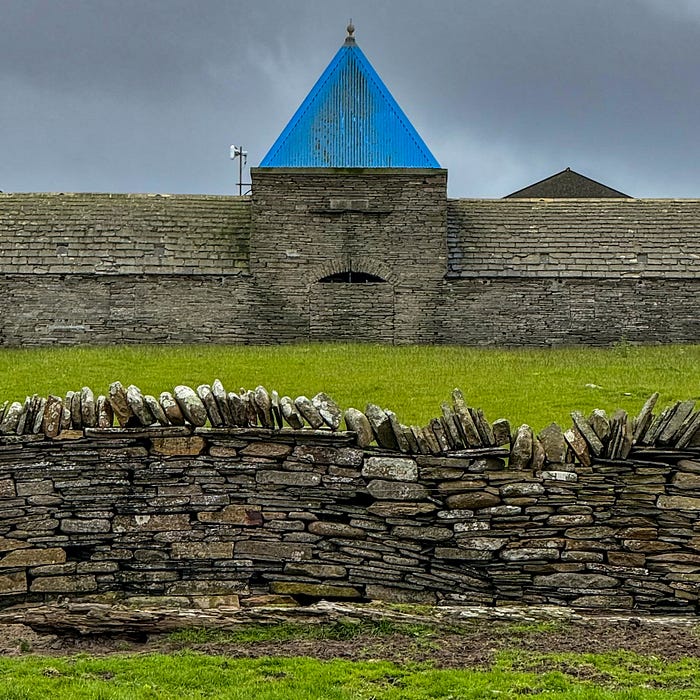The Grumpy Building
This building woke up on the wrong side of the bed.

In Stromness, Orkney Islands, Scotland, we came across a building with a distinctly grumpy expression. Or is it just me?
The architectural features aligned to give it an almost human look of displeasure, blending seamlessly into the stark landscape.
The dour farmhouse in Stromness was an intriguing example of how our environment can (seemingly) communicate with us. I started looking for more.
Seeing Faces in Buildings: The Psychology of Pareidolia
Have you ever looked at a building and thought it seemed to have a personality, maybe even an expression like a scowl or a smile?
This phenomenon is called pareidolia, where we see familiar patterns like faces in inanimate objects.
It’s a psychological occurrence where the mind responds to a stimulus, typically an image or sound, by perceiving a familiar pattern where none actually exists.
Superimposing Our Experiences
When we see a building that looks grumpy, what’s really happening is that we’re projecting our own experiences and emotions onto the structure.
This projection is not random. Our brains are constantly trying to make sense of the world by using past experiences and emotions as a reference. If we’re feeling particularly grumpy ourselves, we might be more likely to see that emotion reflected in our surroundings.
This superimposition is a way of making the world more relatable and understandable. By attributing human characteristics to inanimate objects, we create a narrative that makes our environment seem more familiar and less chaotic.
This can be comforting and even entertaining, but it also says a lot about our state of mind and our need for connection. Well, I am speaking for myself here.
Influence of the Environment
The starkness of the landscape, particularly in places like the Orkney Islands, can enhance our receptiveness to pareidolia. The Orkney Islands are known for their rugged, austere beauty.
The landscape's simplicity and minimalism allow the mind to wander and notice details it might otherwise overlook.
In such a setting, the contrast between the natural surroundings and human-made structures can stand out more sharply.
At least it did so for me.

